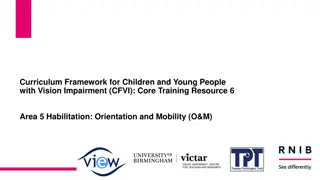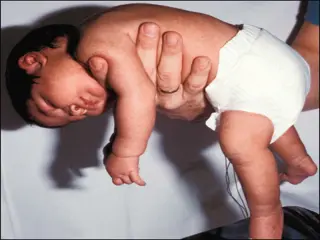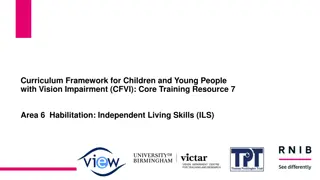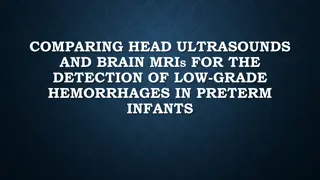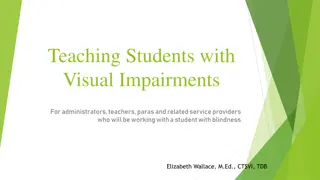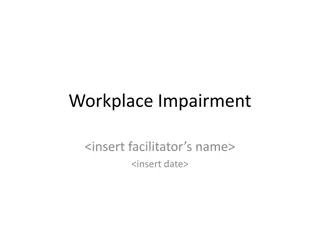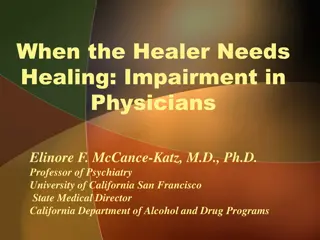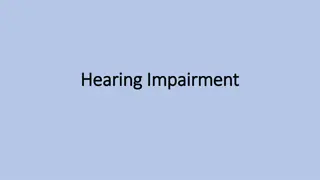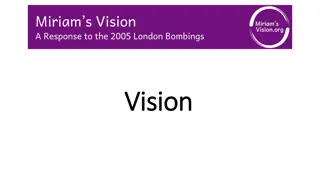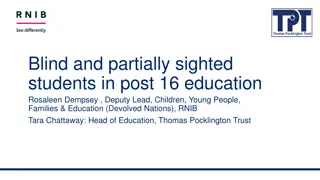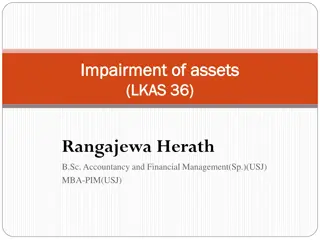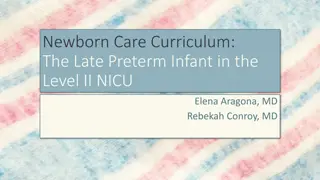Understanding Cortical Visual Impairment in Infants
Cortical Visual Impairment (CVI) is a condition resulting from retrogeniculate brain damage that affects visual processing in infants. Commonly observed in premature infants, CVI can manifest as atypical behaviors like staring at lights, optic atrophy, and nystagmus. The causes range from structural abnormalities to metabolic issues, impacting the visual pathways differently in full-term versus preterm infants. Understanding the pathophysiology and impaired dorsal and ventral stream functions aids in recognizing and managing CVI in affected infants.
Download Presentation

Please find below an Image/Link to download the presentation.
The content on the website is provided AS IS for your information and personal use only. It may not be sold, licensed, or shared on other websites without obtaining consent from the author. Download presentation by click this link. If you encounter any issues during the download, it is possible that the publisher has removed the file from their server.
E N D
Presentation Transcript
Case History Six month old ex 24-week premature infant has been recently discharged from the NICU with tracheostomy, feeding tube S/P NEC and has increased tone and back arching. Mother of infant is concerned that child looks past her, stares at lights and ceiling fans and looks away when reaching for an object.
Definition Bilateral visual impairment due to retrogeniculate brain damage Eye exam typically normal Displays atypical behaviors May see optic atrophy and nystagmus
Causes Structural: brain malformations, tumors Vascular: hypoxic/ischemic event, perinatal stroke Infectious: meningitis, encephalitis Inflammatory: vasculitis Trauma: TBI, shaken baby Metabolic: neonatal hypoglycemia, mitochondrial disease, lysosomal disorders Neurologic disease: seizure, hydrocephalus
Pathophysiology in full term infants (more superficial damage) Hypoxia Hypercarbia Abnormal cerebral blood flow in watershed areas of cortex and subcortex Infarctions Cortical thinning with loss of gray matter
Pathophysiology in preterm infants (deeper damage) Hypoxia/ischemia Hemorrhage Subcortex damage in periventricular deep white matter Periventricular leukomalacia (PVL) Optic radiation and corticospinal tract damage
Dorsal stream function getting there Connect occipital area to parietal area Responsible for: Finding objects in space Figure/background Extremity movement Examples of deficits: Difficulty with steps or changes in surfaces Inaccurate reach Difficulty with complexity
Ventral stream function who or what is there Connect occipital area to temporal lobe Responsible for: Form recognition Visual memory Examples of deficits: Forget location of objects Difficulty with recognition of faces, shapes, objects
Visual acuity Variable Acuity may be normal Deficit may be higher level Processing or interpretation of visual information May be called cognitive visual dysfunction
Visual field Various types may be seen: Swiss cheese or islands Hemianopsia Inferior field loss
Characteristics in infants/delayed children Variable, poor or atypical response Eccentric viewing Latency Preference for familiarity Light gazing Color preference Difficulty with complexity Preference for certain visual fields Better visual performance with movement
Characteristics in older children with higher function Slow and inefficient visual performance Deficiency of visual perception and integration Contrast sensitivity impairment Difficulty with complexity Short visual attention Poor visual memory Difficulty with object recognition/face recognition Expressive delay
CVI Treatment Systemic therapy disease process may cause or prevent improvement treat underlying medical conditions (eg: seizures, hydrocephalus)
CVI Treatment Correct refractive error Treat accommodative insufficiency Treat amblyopia Refer for vision services
CVI Treatment Strabismus alignment may be variable and improve alignment may improve as acuity improves observation for improvement of visual function and stability of alignment is suggested prior to surgical intervention
General principles for intervention Must take into account other developmental issues Recommendations need to be specific and aimed at child's requirements Need to do timely reassessments and alter plan/interventions since improvement in CVI occurs
Multidisciplinary team approach parents/family primary care physician pediatric ophthalmologist pediatric neurologist educational specialist teacher of visually impaired occupational therapist physical therapist speech therapist teacher of the hearing impaired
Patient and family centered care listen to and validate parent's concerns ask about parental expectations provide education encourage parents to communicate observations of progress or problems
Recovery of vision in CVI Most children have some degree of improvement Recovery can occur over months to years Degree of recovery cannot be predicted from imaging studies
Basic research Some studies suggest more mature visual systems may retain a degree of plasticity Functional MRI may be used to differentiate specific areas of function
Education Medical professionals importance of early diagnosis final acuity cannot be predicted by neuroimaging importance of early referral for vision services need for evaluations based on function and impact on ADL with appropriate interventions
Prevention Improved prenatal care Safety recommendations in order to reduce TBI (helmet use, seat belt) Refinement of techniques to reduce neuronal damage (head and body cooling to reduce damage in hypoxic-ischemic encephalopathy)
Pearls Make diagnosis early and refer for vision services. Final visual outcome cannot be predicted by neuroimaging. Multidisciplinary team necessary . Be optimistic about recovery since children may obtain improved visual function.




